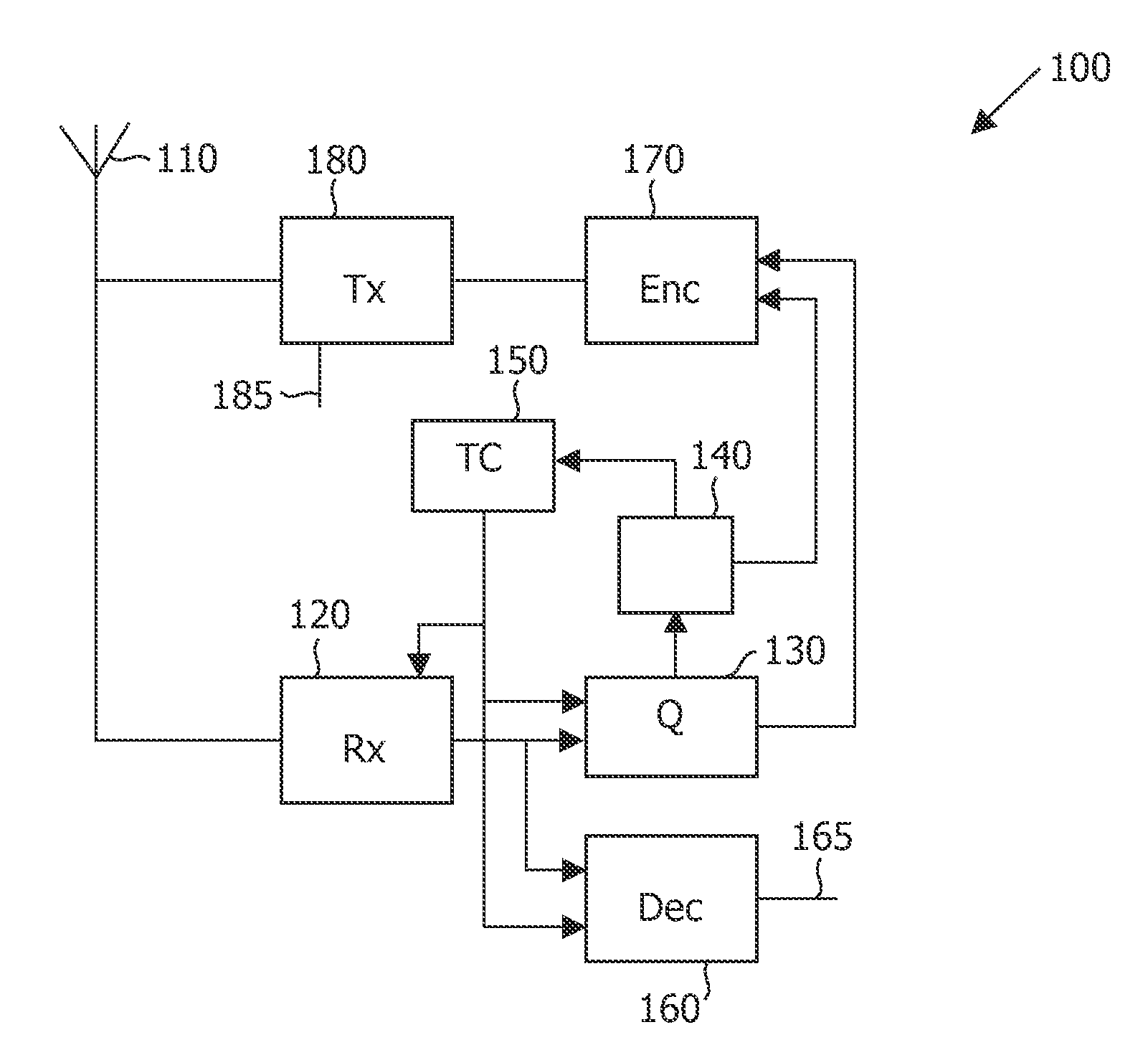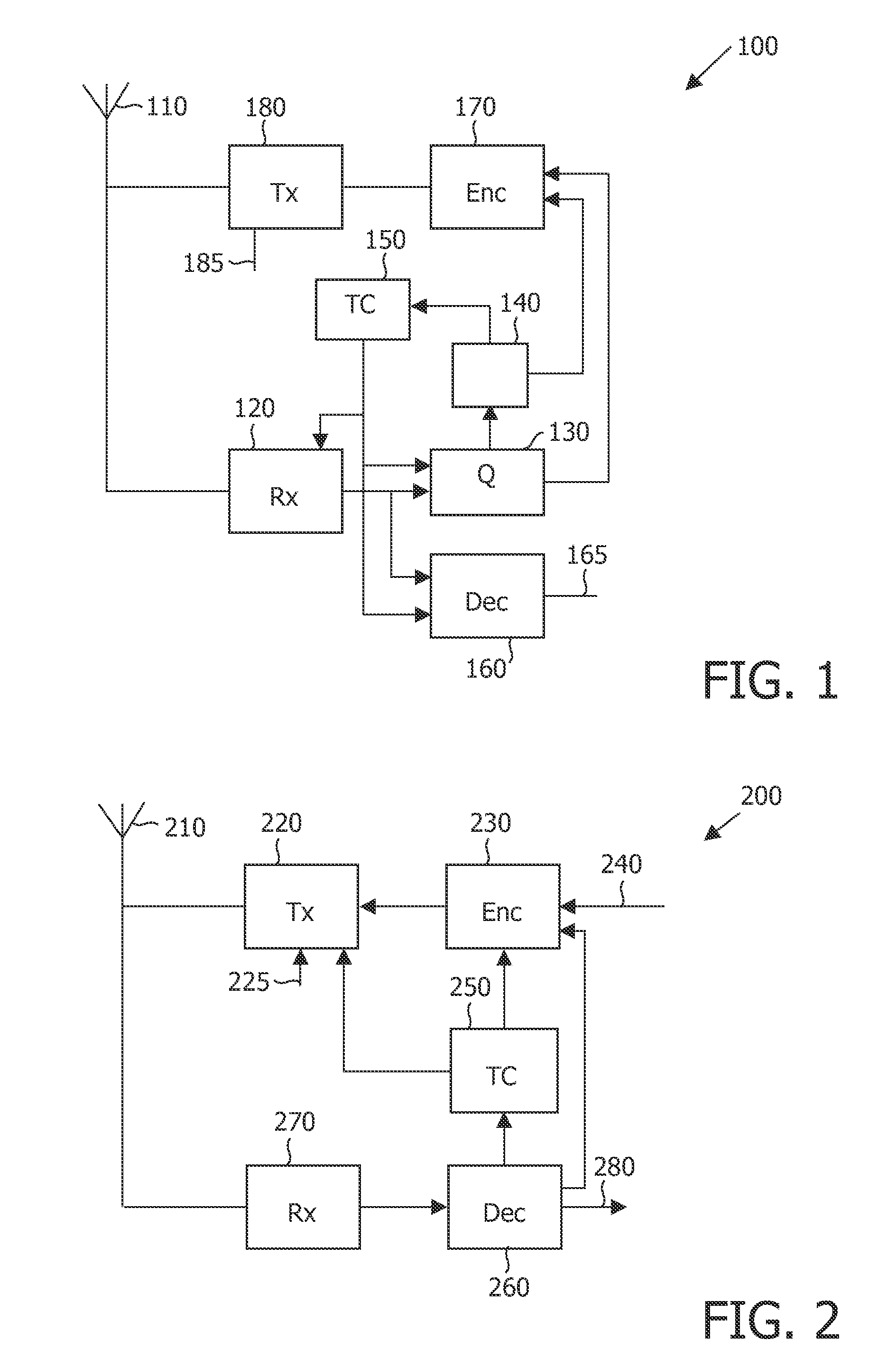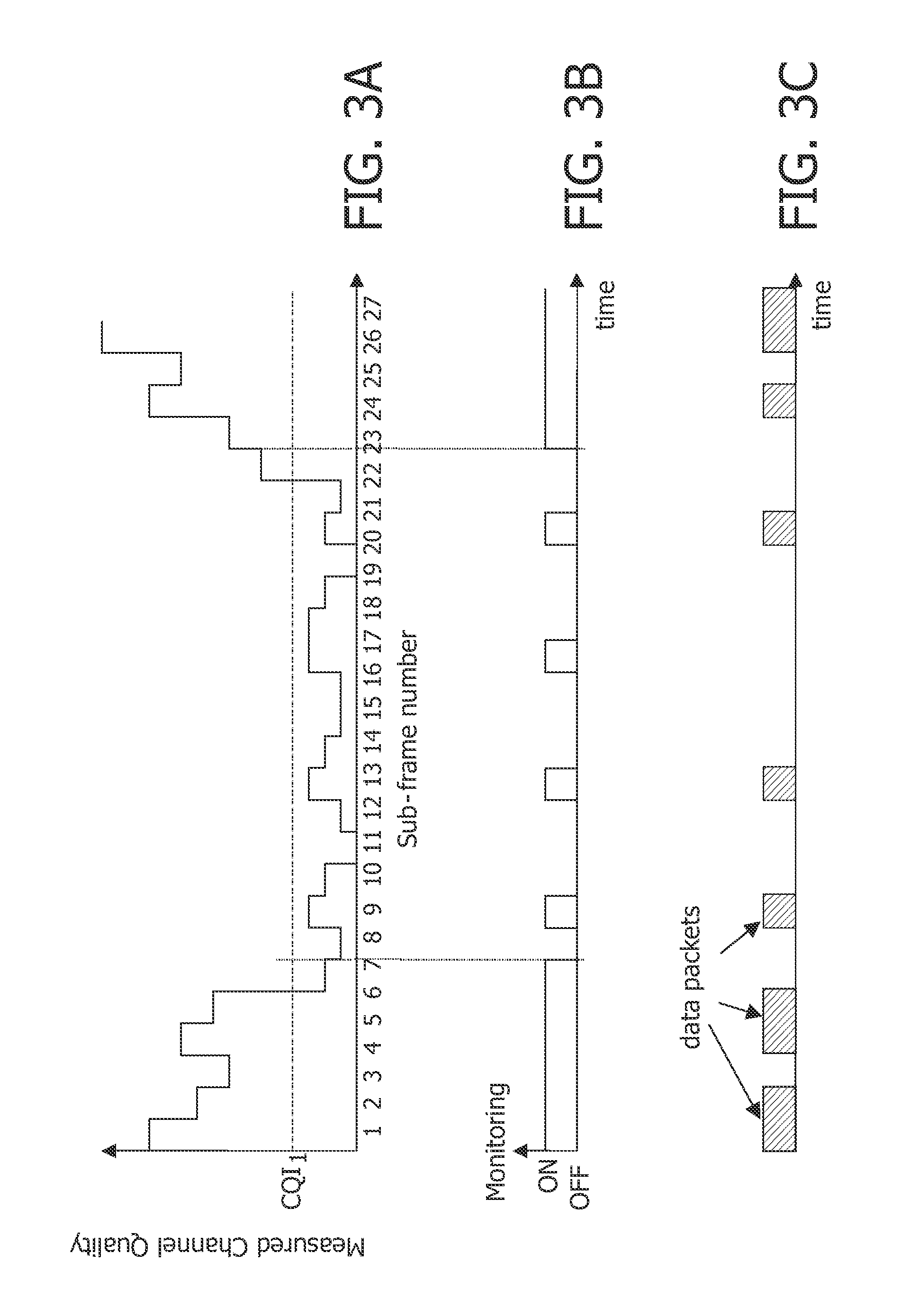Radio Station and Method of Operating a Radio Station
- Summary
- Abstract
- Description
- Claims
- Application Information
AI Technical Summary
Benefits of technology
Problems solved by technology
Method used
Image
Examples
Embodiment Construction
[0027]Referring to FIG. 1, there is illustrated a block schematic diagram of a receiving radio station 100 for receiving data packets. It comprises an antenna 110 coupled to an input of a receiver (Rx) 120 for receiving radio signals. An output of the receiver 120 is coupled to an input of a quality measurement stage (Q) 130 for measuring the quality of received signals. The output of the receiver 120 is coupled to an input of a decoder (Dec) 160 for decoding received signals, including an indication that a data packet is being transmitted, the data packets themselves and other signals. Decoding may include determining whether a received signal includes an address of the radio station 100. The decoder 160 has an output 165 for delivering received and decoded data to an application (not illustrated). The decoder 160 may also generate acknowledgements for transmission to indicate successful receipt of a data packet or to request retransmission of a data packet.
[0028]An output of the q...
PUM
 Login to View More
Login to View More Abstract
Description
Claims
Application Information
 Login to View More
Login to View More - R&D
- Intellectual Property
- Life Sciences
- Materials
- Tech Scout
- Unparalleled Data Quality
- Higher Quality Content
- 60% Fewer Hallucinations
Browse by: Latest US Patents, China's latest patents, Technical Efficacy Thesaurus, Application Domain, Technology Topic, Popular Technical Reports.
© 2025 PatSnap. All rights reserved.Legal|Privacy policy|Modern Slavery Act Transparency Statement|Sitemap|About US| Contact US: help@patsnap.com



